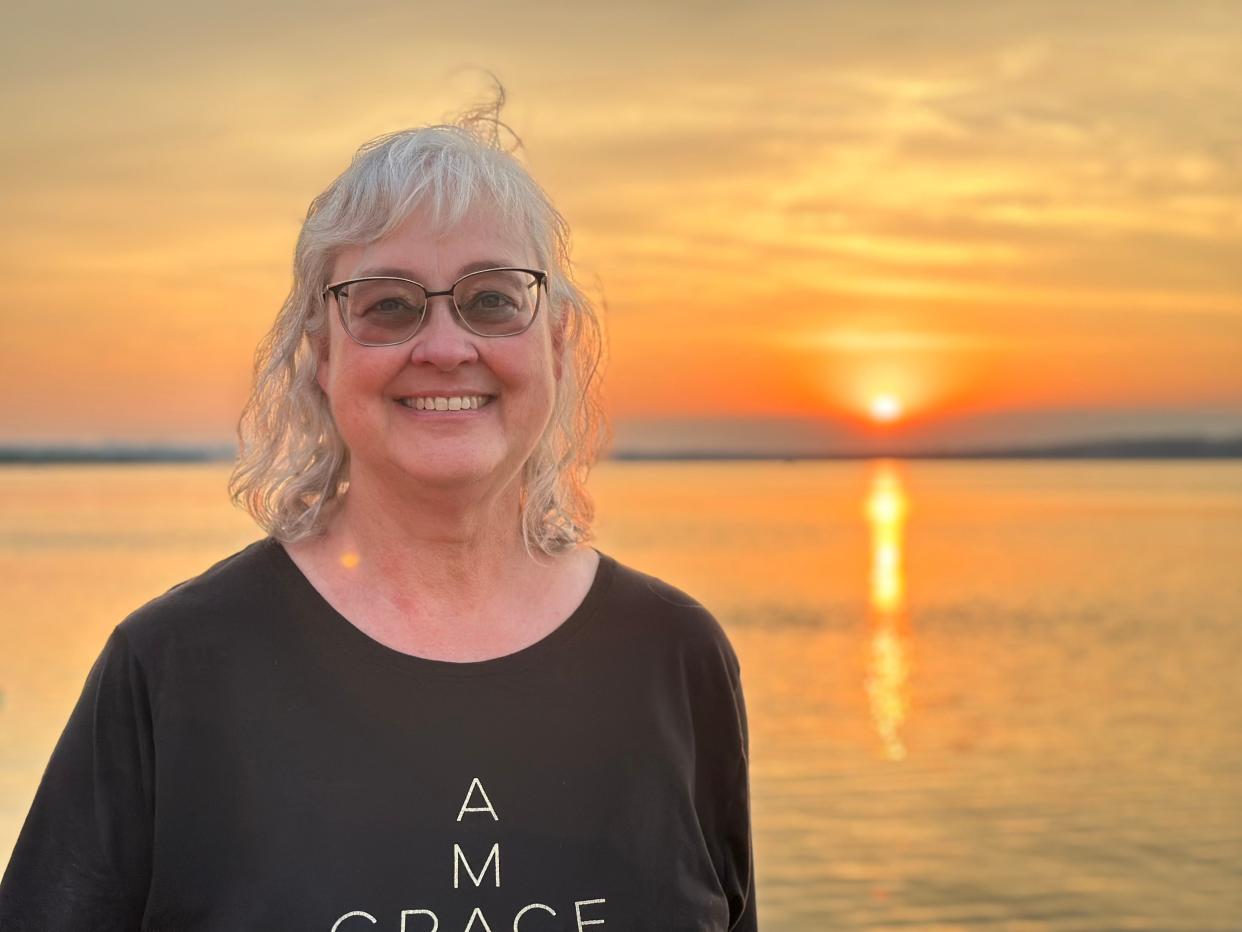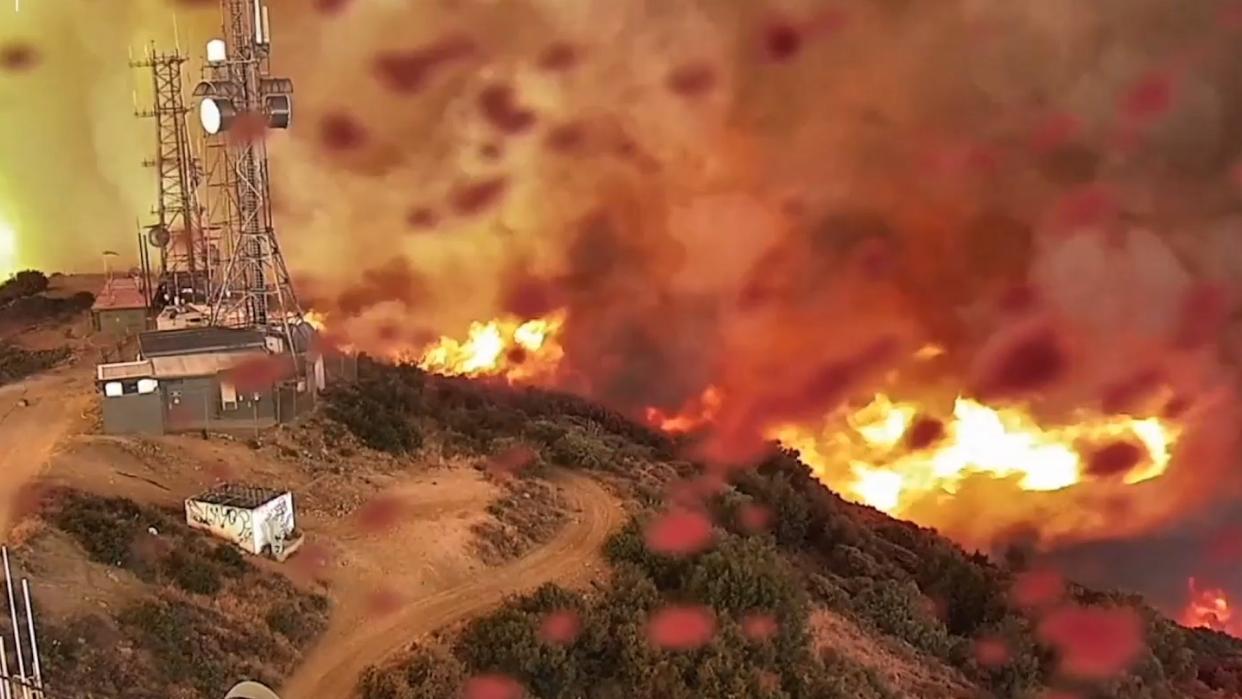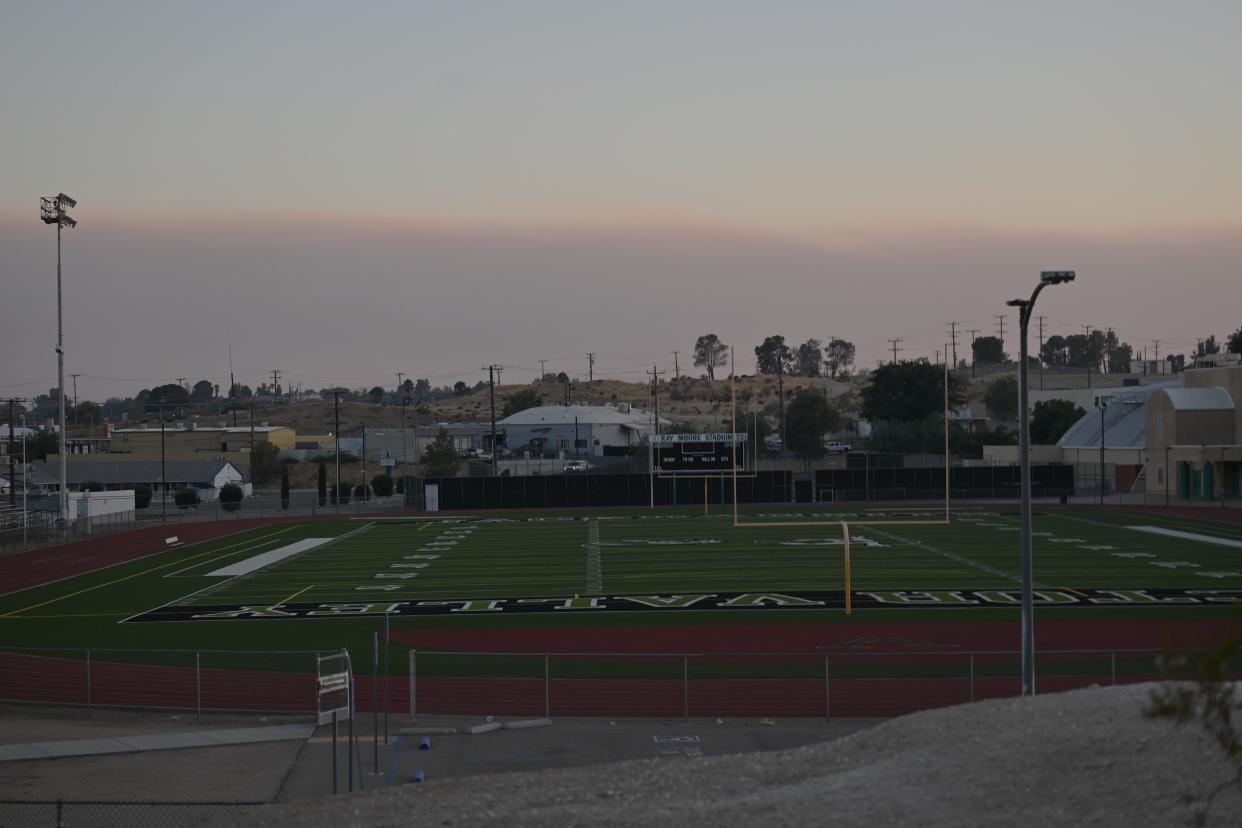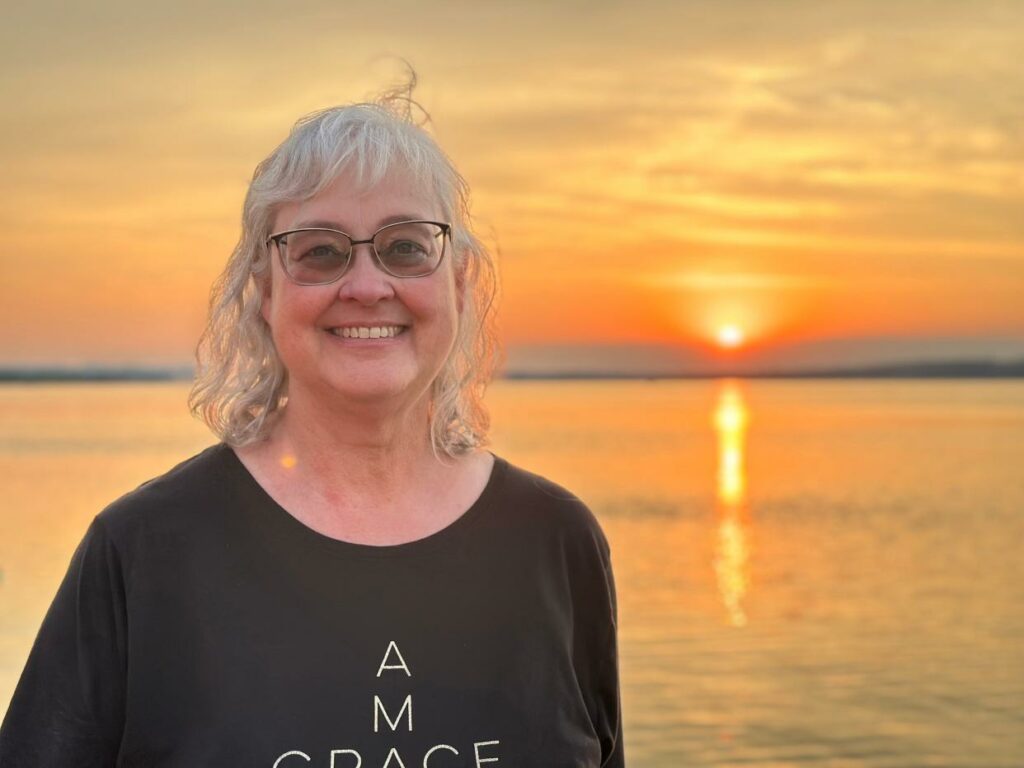Three wildfires surround Dr. Karen Jakpor’s Southern California home and she doesn’t know where to go.
Even though fire lines are miles away, smoke billows down the mountains into the hills and valleys of the Inland Empire, a mega-region east of Los Angeles. Jakpor, 62, has asthma. Toxic wildfire smoke severely cuts her breathing. Asthma flares, already debilitating with regular pollution in the heavily congested region, are worsening with the Line, Airport and Bridge fires that triangulate on Riverside, where Jakpor lives.
Jakpor is looking for a respite outside of the area as the blazes continue to burn with no control. And so are scores of others. Southern California has notoriously polluted air. Now, tens of millions of people are under advisories for the three fires that have burned hundreds of thousands of acres and counting.
Wildfire smoke — burning trees and shrubs but also homes and other manmade materials — contains toxic chemicals harmful to human health immediately and over longer periods.
“What’s happening to me, at a distance, is an indication of what’s happening to people who are at risk, who live even closer to the fires,” Jakpor, whose voice was hoarse and strained, told USA TODAY. “You can’t just go based on the evacuation areas. You might have to leave even if you live further away.”


Dr. Karen Jakpor, of Riverside, Calif., has had severe asthma flares from three wildfires raging in Southern California.
Jakpor’s split-level home is on a hill surrounded by a small orange grove. On Thursday morning, the view beyond the palm trees was a foggy haze. She couldn’t see out to Mount Baldy, where the Bridge Fire is raging, rising above the Inland Empire, though summer smog often makes the mountains invisible anyway.
Inside her home, Jakpor, an American Lung Association volunteer, has eight HEPA filters running. On the bottoms of the doors, she’s wedged rolled-up towels. Her balcony sliding-glass door in the master bedroom has tape sealing it. She’s taken to wearing an N95 mask indoors and uses a non-invasive ventilator, which she normally uses at night, even during the day.
Jakpor is constantly checking air quality indices to look at PM 2.5 levels, the harmful tiny particles smaller than 2.5 micrometers that are 30 times smaller than a human hair’s width, that wildfires let off and can trigger asthma attacks, heart attacks and strokes.
At her hilltop home in Riverside, Jakpor still debated whether to leave Thursday, as her pulmonologist recently recommended. She opted for the water, maybe San Diego. But almost any direction she travels, she would have to try to avoid breathing in toxic air.
Millions under advisory
County health officers have issued warnings to residents about the harms of breathing in the toxic air.
“Smoky conditions can be hazardous for young children, the elderly, individuals with heart conditions or chronic lung disease such as asthma and bronchitis, and individuals with other respiratory ailments,” San Bernardino County Health Officer Michael Sequeira said in a statement. “Older adults and children should remain indoors, keep windows ad doors closed, or seek alternate shelter.”


Timelapse footage shows wildfire destroying a California weather-monitoring station
The South Coast Air Quality Management District oversees a vast region of 17 million people stretching from Los Angeles beaches to mountain ski resorts and desert oases. On Thursday afternoon, officials issued a smoke advisory for the entire district. All three fires are within the district.
While valleys would be spared from the most harmful effects until Thursday evening, the risk still permeated throughout Southern California.
“The bottom line is if you smell smoke – if you see smoke down at ground level – you want to minimize the amount of smoke you’re breathing in,” Scott Epstein, planning and rules manager overseeing air quality assessment for the district, told USA TODAY. He encouraged people to look at air quality readings for realtime local data.
Why wildfire smoke is so toxic
Wildfire smoke is made from a concoction of fine particles and gases. Climate change is worsening the size and pace of these fires.
Tiny particles, like PM 2.5, can hang in the air, travel long distances, and be inhaled by people and travel deep into their lungs. Immediate effects can be stinging eyes or nasal irritation, such as scratchy throat or wheezing, according to the Centers for Disease Control and Prevention. It can also cause headaches, chest pain and fast heartbeat.


A plume of smoke from a pair of wildfires in mountains can be seen off in the distance in this photo taken outside of Victor Valley High School’s Ray Moore Stadium on Wednesday, Sept. 11, 2024.
It can trigger asthma and heart attacks, but it also poses longer term consequences as these particles enter the bloodstream. Some research suggests high exposure can result in increased risk of cancer and developing dementia.
Wildfire smoke also lets out carbon monoxide, an odorless and colorless gas known to reduce oxygen to the body’s organs and tissues, the American Lung Association says. This can lead to headaches, nausea and dizziness initially, but at high levels, it can lead to premature death.
Part of the problem is wildfires are not just burning trees and brush, but also homes, plastic and other manmade materials, said Dr. Afif El-Hasan, an Orange County pediatrician and American Lung Association spokesperson who is an expert in asthma. Additionally, wildfires increase the amount of pollution already seen from Southern California’s freeways and industry that make it home to consistently some of the worst air quality in the U.S.
Who is at risk?
People with asthma and other lung or even heart diseases are at greater risk from wildfire smoke, though it affects everyone.
“The smoke can certainly make it worse or trigger an attack of one type or another, because your lungs are working harder to breathe,” he told USA TODAY. “Sometimes, the airways get constricted from the irritation. That irritation and damage to the airways doesn’t just happen to people with asthma or other lung disease. It can happen to healthy people as well.”
With wildfires, hospital visits for respiratory issues such as asthma attacks tend to increase.
Dr. Roopa Viraraghavan, an associate professor of pediatrics at the University of California, Riverside, School of Medicine, said she’s already seeing patients with complaints of respiratory and eye irritation, along with fatigue, headaches and reduced lung functions.
Viraraghavan also worried about a heat wave just days before. The triple-digit temperatures in California not only dried conditions, but also can exacerbate health issues for people in vulnerable groups. Then came the fires.
“Everything has become hotter and hotter,” she said. “It doesn’t take much for this brush to catch fire when it’s this hot.”
Steps to avoid wildfire smoke
If you smell or see smoke from a wildfire, stay inside. Check your local air quality through trusted resources like airnow.gov or your local district.
Avoid outdoor activities. If you need to go outside when air quality is poor, use a respirator, such as an N95 or P-100 mask.
Inside, close windows and doors. Use a higher efficiency HEPA filter. If you can’t buy a commercial portable air filter, you can create your own. One example is the Corsi-Rosenthal box made from simple materials of an air filter, box fan, duct tape, clamps and bungee cords.
The American Lung Association recommends creating a “clean room” in your home where risk of wildfire smoke is high. The Environmental Protection Agency says this room should be free from activities that create particles from cooking or smoking. Doors should be kept closed to prevent smoke from entering. A portable air cleaner can make the room’s air cleaner than the rest of the home.
If it’s difficult, seek a shelter.
This article originally appeared on USA TODAY: Southern California wildfire smoke affects tens of millions miles away
Source link : http://www.bing.com/news/apiclick.aspx?ref=FexRss&aid=&tid=66e47fef8fb0499eb3347e409a900262&url=https%3A%2F%2Fwww.aol.com%2Fsouthern-california-wildfires-affect-tens-090946930.html&c=16213422130781777631&mkt=en-us
Author :
Publish date : 2024-09-13 01:09:00
Copyright for syndicated content belongs to the linked Source.
